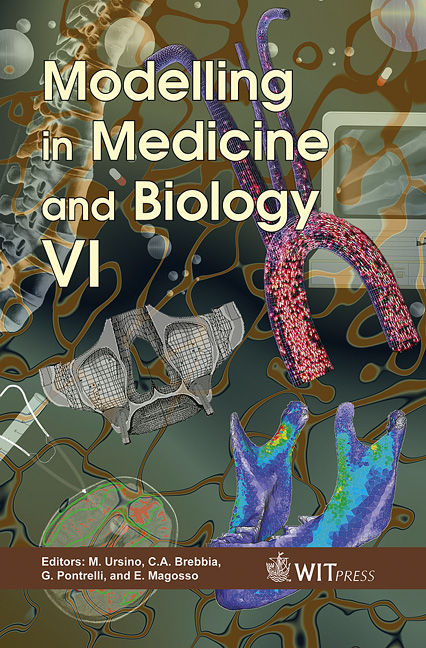A Boundary Element Model Of Vascular Gas Bubble Sticking And Sliding
Price
Free (open access)
Transaction
Volume
8
Pages
9
Published
2005
Size
634 kb
Paper DOI
10.2495/BIO050321
Copyright
WIT Press
Author(s)
B. Eshpuniyani & J. L. Bull
Abstract
A two dimensional channel flow in which a bubble adheres to one of the walls is studied computationally. The flow regime of interest here corresponds to very low Reynolds numbers. This allows us to model the flow using Stokes equations. The numerical method used is the boundary element method (BEM). A Tanner law is used to model the moving contact line dynamics. Both hydrophilic and hydrophobic channel walls are considered. The evolution of the bubble interface, pressure and velocity fields, and wall normal and shear stresses are studied for different values of inlet to outlet pressure ratios. The wall normal and shear stresses peak at the contact lines. It is shown that the horizontal force acting on the bubble approaches a constant value as the simulation progresses in time. 1 Introduction A two dimensional channel flow in which a bubble adheres to one of the walls is studied computationally. This study is a part of an investigation into using a gas embolotherapy based technique for cancer treatment. This potential treatment modality uses gas bubbles to occlude blood flow to a tumor, thereby inducing tumor necrosis. The bubbles originate as perfluorocarbon droplets that are small enough to pass through capillaries. Low intensity ultrasound is used to track their motion.At the desired location the bubbles are vaporized using high intensity ultrasound to produce gas bubbles which are several times larger than the initial droplet size ([1, 2, 3, 4, 5, 6, 7]). These bubbles then stick in the vasculature, occluding the flow. The bubble sticking process likely involves the bubble contacting the vessel wall and then either sticking immediately or sliding some distance before becoming stuck or detaching from the wall. The effectiveness of the technique depends on where the bubbles stick and how much of the flow they occlude. In addition to
Keywords





